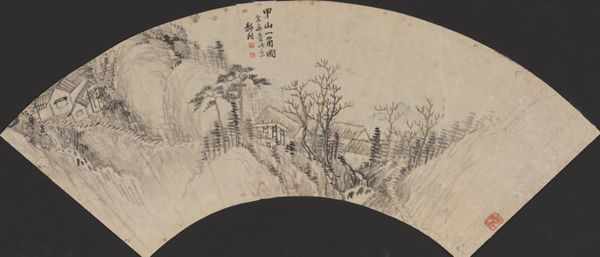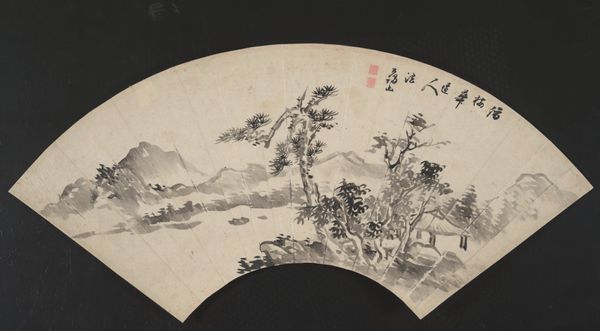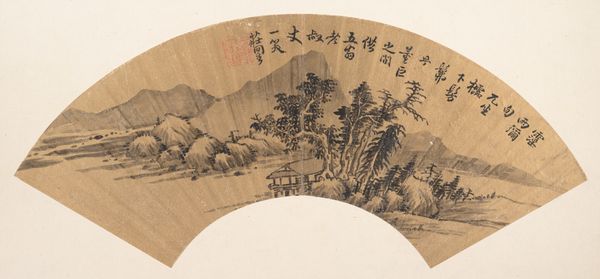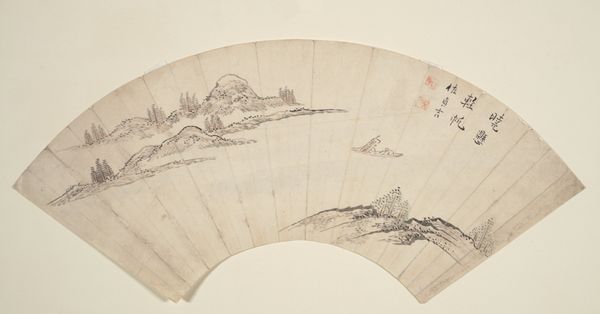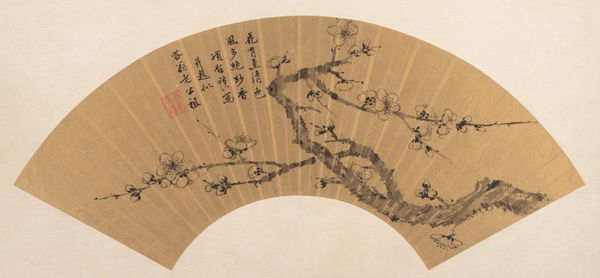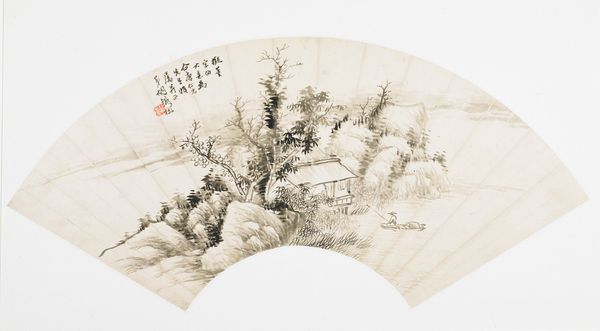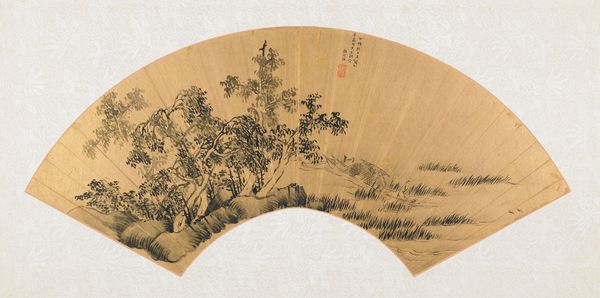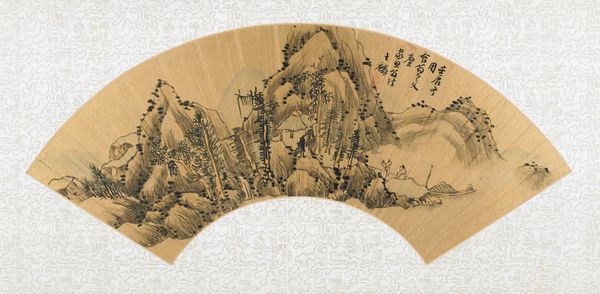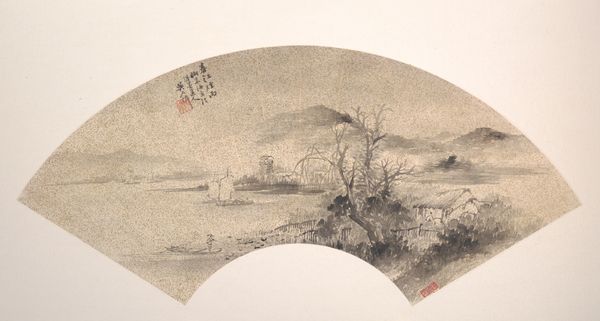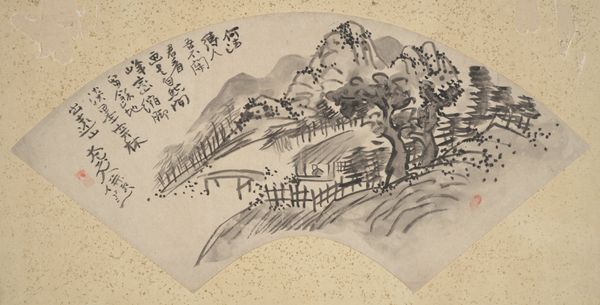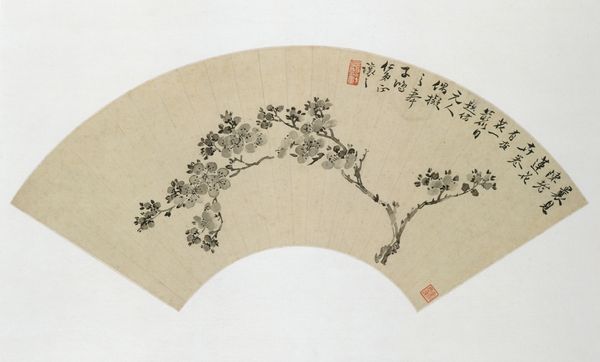
Alone in the Cold Mountains c. early 19th century
0:00
0:00
drawing, paper, ink
#
drawing
#
asian-art
#
landscape
#
paper
#
ink
#
orientalism
Dimensions: 8 3/8 × 18 3/16 in. (21.27 × 46.2 cm)
Copyright: Public Domain
Curator: I find this unassuming fan to be quite captivating. The ink-on-paper drawing is titled "Alone in the Cold Mountains," attributed to Rai San'yo, created in the early 19th century. Editor: My immediate reaction is the subtlety. The limited palette and delicate strokes create an atmosphere of quietude. I'm intrigued by the artist’s decision to present this vista on such a commonplace, utilitarian object. Curator: Precisely. We should consider how the fan format affects the viewing experience and reception of landscape imagery. What does it mean to miniaturize such grand subject matter, and put it in the hands of a person, embedded in a daily ritual of cooling oneself? Editor: Right, the portability introduces a different level of intimacy and engagement, moving landscape art away from the rarefied exhibition context of paintings. I want to know more about the social life of this object. What was the paper quality, the specific type of ink used, how was the application achieved. Curator: Given Rai San’yo's background as a Confucian scholar, one wonders about the cultural implications. This wasn't simply a decorative piece; it likely held deeper philosophical resonance for the user. The fan becomes a site where aesthetics meet ideology. We can discuss what kind of social roles an object like this had. Editor: Indeed. It serves a symbolic purpose and displays the knowledge of the carrier, while circulating representations of natural space. Think about how landscapes function to shape individual relationships with land. This representation invites reflection on humanity’s place within nature. I’d be curious to research whether this was part of a wider artistic or artisan workshop setting. How were such things produced? Curator: Thinking of San'yo’s world reminds us that artwork such as this operated inside the established social norms. His individual perspective as it comes across here is a testament to his artistic ability to express new creative concepts within tradition. Editor: And from my point of view, this art object really gains importance when considered within larger sets of human interactions, rather than in isolation. It speaks to art's function within society, on a fundamental and deeply human level. Curator: Exactly. Considering these intertwined aspects enriches our comprehension of the artwork itself, and its lasting appeal throughout centuries. Editor: Yes, approaching art by way of human activity surrounding its manufacture gives art historical approaches entirely new layers of meaning.
Comments
No comments
Be the first to comment and join the conversation on the ultimate creative platform.
